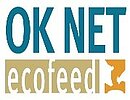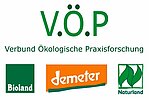Free choice feeding - an alternative feeding method for laying hens
Problem
Formulated, complete diets for laying hens do not reflect their nutrient requirements since their needs change according to the weather and their age. As a consequence, nutrients are often under- or oversupplied.
Solution
With free choice feeding, the rations are not fed to the chickens as a complete feed but instead offered as three separate component feeds supplying energy, protein and calcium.
Benefits
By using feed produced on-farm, feed costs can be reduced. At the same time, the hens can use their so-called "nutritional wisdom" to better create their own rations with the free-choice feeding. The system is interesting, especially for mobile housing systems as they offer high amounts of young grass and can thus reduce the amount of protein sources used.
Applicability box
Geographical coverage
Feed cost savings, feed efficiency
Application time
At any time, best one month prior to onset of laying
Required time
One-month changeover time for hens
Period of impact
During the entire production period
Equipment
Feed troughs with inserted partitions
Best in
Small groups in permanent and mobile stables
Practical Recommendations
- The feed choices can be grouped into three major feedstuffs (not including grit): an energy source, a protein source mixed with mineral and vitamin supplements and a calcium source.
- To promote learning in the hens, the energy component must contain a lot of starch and energy, the protein component a lot of protein, minerals and vitamins, and the third component a lot of calcium. With only moderate differences, learning may not occur.
- If different types of grain are used in the energy component, they should be fed mixed in the same trough.
- The transition of feed to whole grains should be done slowly over two to three weeks so that the gizzard can build up the muscles necessary to crush the grains.
- Habituation to the free choice system with whole grains should take place one month before the start of laying, i.e. from about the 15th week of life. This allows the hen to get used to the choice feed before the nutrient requirements increase with egg production. Calcium reserves can also be built up if necessary.
- Vitamins and trace elements should not be offered as a separate component since a hen’s ability to control intake is not well understood. There is a risk that some animals may avoid them or eat too much, resulting in toxicity.
- To obtain a complete ration, the supplement feed must be suitable for mixing with cereals or cereals and limestone. Following the rearing supplement, the ration should be switched to the laying supplement, as usual, when egg production starts.
- A sufficient animal/feeding area ratio must be maintained, and there must be enough distance between the troughs. For example, for every 100 hens, two hanging troughs per feed component.
There is further need for research on behaviour, potential savings and practical application.
Further information
Reading
- Blair, R. 2018. Nutrition and Feeding of Organic Poultry. 2nd edition. CABI. Boston. ISBN 9781786392992.
- Bennet, C. 2002. Choice-Feeding of Small Laying Hen Flocks. Extension Report. Manitoba Agriculture. Winnipeg, Canada. 1-2.
- Forbes, J.M. and F. Shariatmadari. 1994. Diet selection for protein by poultry. World Poultry Science Journal, Vol 50, 7-24.
- Henuk, Y.L. and J.G. Dingle. 2002. Practical and economic advantages of choice feeding systems for laying poultry. World Poultry Science Journal, Vol. 58, 199-208.
- Roth, F.X. 2005. Fütterungsstrategien für Legehennen in Haltungssystemen mit Grünbewuchs im Auslauf (Nach EU VO 2092/91). Final report research project No.: 02OE505/F. https://orgprints.org/8908/
- Roth, F.X. 2003. Fütterungsstrategien für Legehennen in Haltungssystemen mit Grünbewuchs im Auslauf (Nach EU VO 2092/91). Final report research project No.: 02OE505. https://orgprints.org/2371/
About this practice abstract and OK-Net EcoFeed
Publishers:Öko-BeratungsGesellschaft mbH,
DE85411Hohenkammer,
Phone +49 8137 6372-900,
,
www.naturland-beratung.deResearch Institute of Organic Agriculture (FiBL),
CH5070Frick,
Phone +41 62 865 72 72,
info.suisse@fibl.org,
www.fibl.orgIFOAM Organics Europe,
BE1000Brussels,
Phone +32 2 280 12 23,
www.organicseurope.bio,
www.organicseurope.bio
Contact: o.muesseler@naturland-beratung.de
Permalink: https://organic-farmknowledge.org/tool/38443
https://orgprints.org/view/projects/OKNetEcoFeed.html
This practice abstract was elaborated in the Organic Knowledge Network on Monogastric Animal Feed project. The project is running from January 2018 to December 2020. The overall aim of OKNet EcoFeed is to help farmers, breeders and the organic feed processing industry in achieving the goal of 100% use of organic and regional feed for monogastrics.
Project website: https://ok-net-ecofeed.eu/
IFOAM Organics Europe (project coordinator), BE; Aarhus University (ICROFS), DK; Organic Research Centre (ORC), UK; Institut Technique de l'Agriculture Biologique (ITAB), FR; Research Institute of Organic Agriculture (FiBL), CH; Bioland, DE; Associazione Italiana perl'Agricoltura Biologica (AIAB), IT; Donau Soja DS, AT; Swedish University of Agricultural Sciences, SE; ECOVALIA, ES; Soil Association, UK.



This project has received funding from the European Union’s Horizon 2020 research and innovation programme under grant agreement No 773911. This communication only reflects the author’s view. The Research Executive Agency is not responsible for any use that may be made of the information provided. The authors and editors do not assume responsibility or liability for any possible factual inaccuracies or damage resulting from the application of the recommendations in this practice abstract